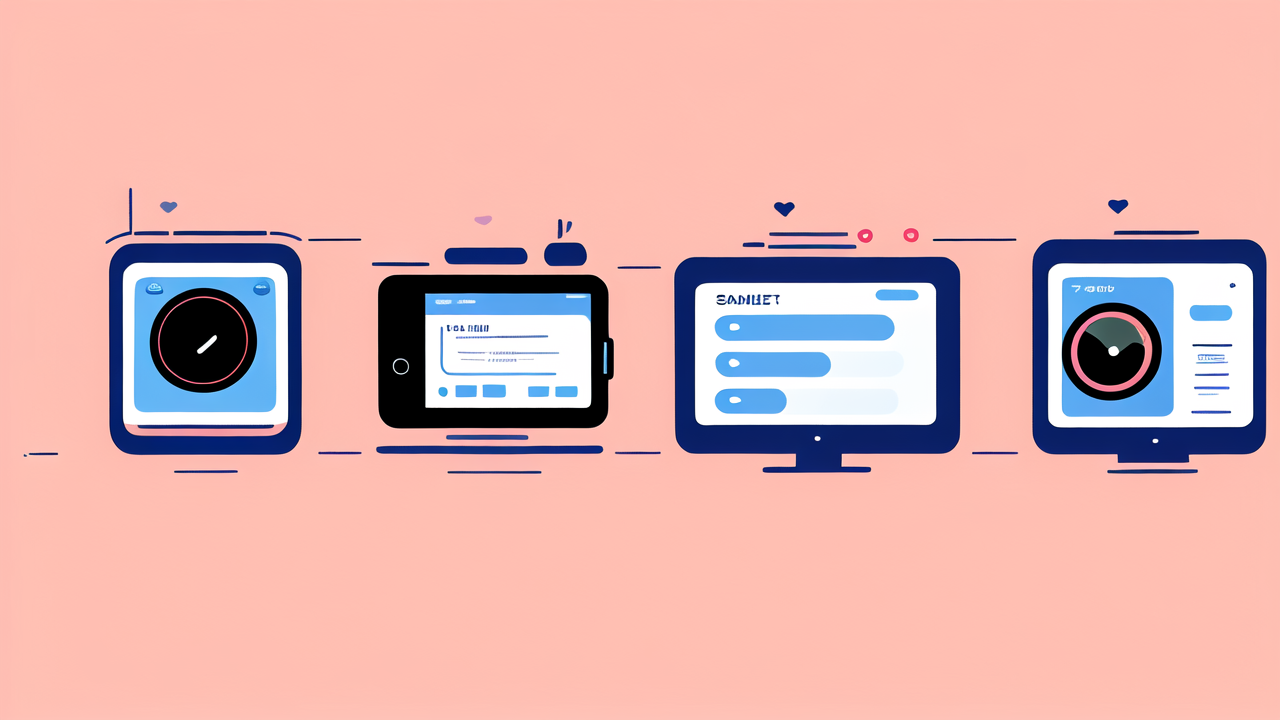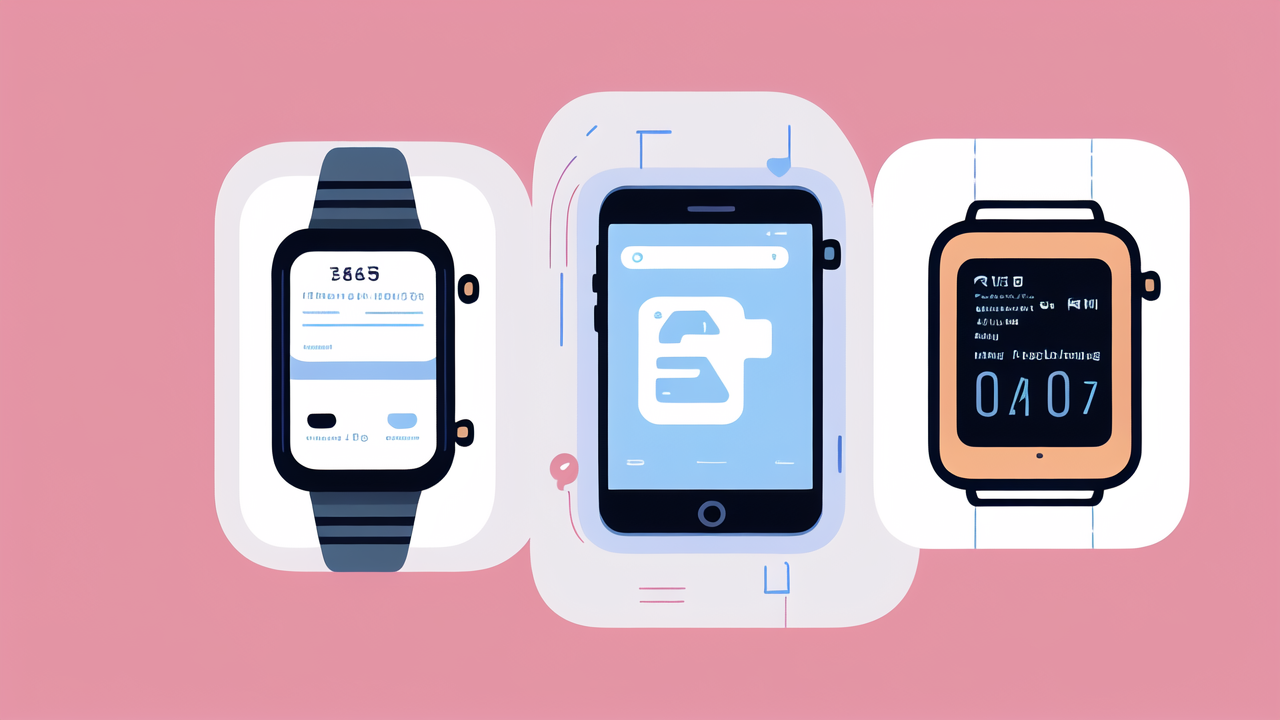The Rise of Smart Watches in Today's Lifestyle
The Evolution of Smart Watch Technology
Smart watches have come a long way since their inception. They started as simple digital watches with basic functions. Now, they are mini-computers on our wrists. Early models could only tell time and do basic math. Today's smart watches can track health, make calls, and even pay for groceries.

The first smart watches appeared in the 1980s. They were bulky and had limited features. In the 2000s, companies like Sony and Samsung introduced more advanced models. These could sync with phones and show notifications. The real game-changer came in 2015 with the Apple Watch. It set new standards for design and functionality.
Since then, smart watches have evolved rapidly. They now have better screens, longer battery life, and more sensors. Many can work without a phone nearby. Some even have cellular connectivity. The latest models can measure blood oxygen, take ECGs, and detect falls. They're not just gadgets anymore, but essential health and lifestyle tools.
Factors Driving the Popularity of Smart Watches
Several factors have fueled the rise of smart watches. First, there's the convenience factor. Smart watches let us access information without reaching for our phones. This is handy in meetings, while exercising, or when our hands are full. They're also great for quick replies to messages or checking notifications discreetly.
Health and fitness tracking is another big draw. Smart watches can monitor heart rate, sleep patterns, and activity levels. Many people use them to set and track fitness goals. Some watches even remind users to move or breathe deeply. This focus on health has made smart watches popular among all age groups.
The integration with smartphones has also boosted their appeal. Smart watches can control music, answer calls, and even find lost phones. For many, they've become an extension of their smartphone. As our lives become more digital, smart watches offer a seamless way to stay connected.
Lastly, the cool factor can't be ignored. Wearing a smart watch is often seen as trendy and tech-savvy. Many brands offer customizable faces and bands. This lets users express their style while enjoying the latest tech. As designs improve, smart watches are becoming fashion statements too.
Key Features of Leading Cool Smart Watches
Cutting-edge Technology and Features
Today's cool smart watches are packed with impressive tech. Most have high-resolution touchscreens that are easy to read in sunlight. They often include GPS for accurate location tracking. This is great for runners and hikers who want to map their routes. Many also have NFC chips for contactless payments.

Health tracking has become a key feature. Advanced sensors can measure heart rate, blood oxygen, and even ECG. Some watches can detect irregular heartbeats and notify the user. Sleep tracking is another popular feature. It helps users understand and improve their sleep patterns.
Voice assistants like Siri, Google Assistant, or Alexa are common in high-end models. These allow hands-free control and quick access to information. Some watches can make calls directly, without needing a phone nearby. This is useful in emergencies or when you want to travel light.
Water resistance is now standard in most smart watches. Many can be worn while swimming or showering. Some even offer specific features for water sports, like stroke counting for swimmers. For outdoor enthusiasts, there are watches with altimeters, compasses, and weather alerts.
Design and Aesthetics: Why Style Matters
The look of a smart watch is just as important as its features. Early models were often bulky and unattractive. Now, design is a key selling point. Many watches come in different sizes to suit various wrist sizes. This makes them more comfortable and appealing to a wider audience.
Materials play a big role in the aesthetics. High-end watches often use premium materials like stainless steel, titanium, or ceramic. These not only look good but also make the watch more durable. Glass quality is another factor. Scratch-resistant screens are a must for daily wear.
Customization is a big trend in smart watch design. Most allow users to change watch faces. This lets you switch from a classic look to a modern one with a tap. Interchangeable bands are also popular. Users can swap between sporty, casual, and formal looks easily.
Some brands focus on making their smart watches look like traditional timepieces. These appeal to users who want smart features without a techy look. Others embrace the futuristic style, with sleek designs and vibrant displays. This variety ensures there's a cool smart watch for every taste.
Battery Life and Performance: What Sets Them Apart
Battery life is a crucial factor in smart watch performance. Early models often needed daily charging. Now, many can last several days on a single charge. Some even offer weeks of battery life in basic watch mode. This is a big selling point for users who don't want another device to charge daily.
Charging speed and methods have also improved. Many watches now support fast charging. Some can gain a full day's use from just 15 minutes of charging. Wireless charging is becoming more common too. This makes it easier to keep the watch powered up without fussing with cables.
Performance is another key differentiator. The best smart watches have powerful processors. This ensures smooth operation and quick app launches. They also have enough storage for music, apps, and health data. Good RAM helps with multitasking and keeps the interface responsive.
Connectivity options can set watches apart. Most sync with phones via Bluetooth. But some offer Wi-Fi or even cellular connections. This allows them to work independently from phones. It's great for runners or swimmers who don't want to carry a phone.
Market Trends and Consumer Preferences
Analyzing the Demographics of Smart Watch Users
Smart watch users span a wide range of ages and lifestyles. Initially, they were popular among tech enthusiasts and early adopters. Now, they appeal to a much broader audience. Young adults often choose smart watches for their fitness features and style. They use them to track workouts and stay connected on the go.

Middle-aged users are increasingly turning to smart watches for health monitoring. They appreciate features like heart rate tracking and fall detection. Many find smart watches helpful for managing busy schedules and staying organized. The ability to quickly check notifications without pulling out a phone is a big plus.
Seniors are an emerging market for smart watches. Models with health tracking and emergency features are particularly popular. Some watches can detect falls and automatically call for help. This gives both seniors and their families peace of mind. Easy-to-read displays and simple interfaces make them user-friendly for this group.
Fitness enthusiasts form a significant portion of smart watch users. They rely on these devices to track workouts, monitor progress, and set goals. Many professional athletes use smart watches in their training. The data collected helps them optimize their performance and recovery.
How Consumer Trends Shape the Smart Watch Market
Consumer preferences have a big impact on smart watch design and features. The demand for longer battery life has pushed manufacturers to improve power efficiency. This has led to new battery technologies and power-saving modes. The desire for always-on displays has also driven innovation in screen technology.
Health and wellness trends have greatly influenced smart watch development. Features like stress monitoring and guided breathing exercises are now common. Some watches can even track menstrual cycles or monitor blood glucose levels. As health awareness grows, so does the demand for more advanced health features.
Fashion consciousness has led to more stylish smart watch designs. Many fashion brands now offer their own smart watches. This trend has pushed tech companies to focus more on aesthetics. The result is a wide range of watches that blend technology with style. Users no longer have to choose between function and fashion.
Environmental concerns are also shaping the market. There's growing demand for eco-friendly materials and packaging. Some brands now use recycled materials in their watches and straps. Others focus on creating durable products that last longer. This reduces electronic waste and appeals to environmentally conscious consumers.
The Future of Smart Watches in the United States
The future of smart watches in the US looks bright. As technology improves, we can expect even more advanced features. Artificial intelligence may play a bigger role in health monitoring and personal assistance. We might see watches that can predict health issues before they become serious.
Integration with other smart devices will likely increase. Smart watches could become central hubs for controlling smart homes. They might interact more seamlessly with cars, appliances, and other wearables. This could make them even more essential in our daily lives.
Battery technology is set to improve significantly. We may see smart watches with week-long battery life become the norm. New charging methods, like solar or kinetic charging, could also emerge. This would make smart watches even more convenient for everyday use.
As 5G networks expand, smart watches may become more independent from smartphones. They could offer faster data speeds and more reliable connections. This might lead to new uses we haven't even thought of yet. The US market is likely to see continued growth and innovation in the smart watch sector.




Leave a comment
This site is protected by hCaptcha and the hCaptcha Privacy Policy and Terms of Service apply.